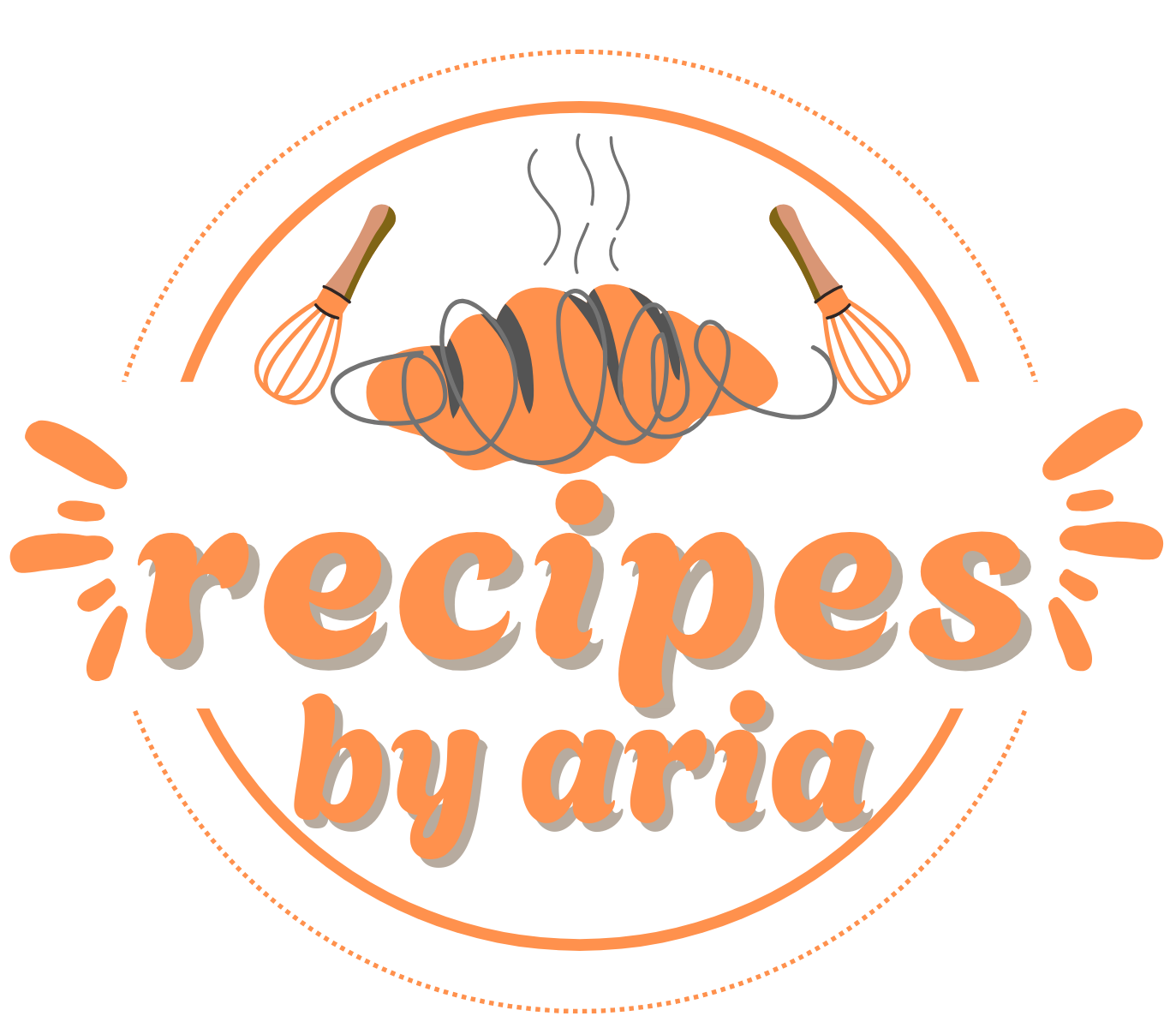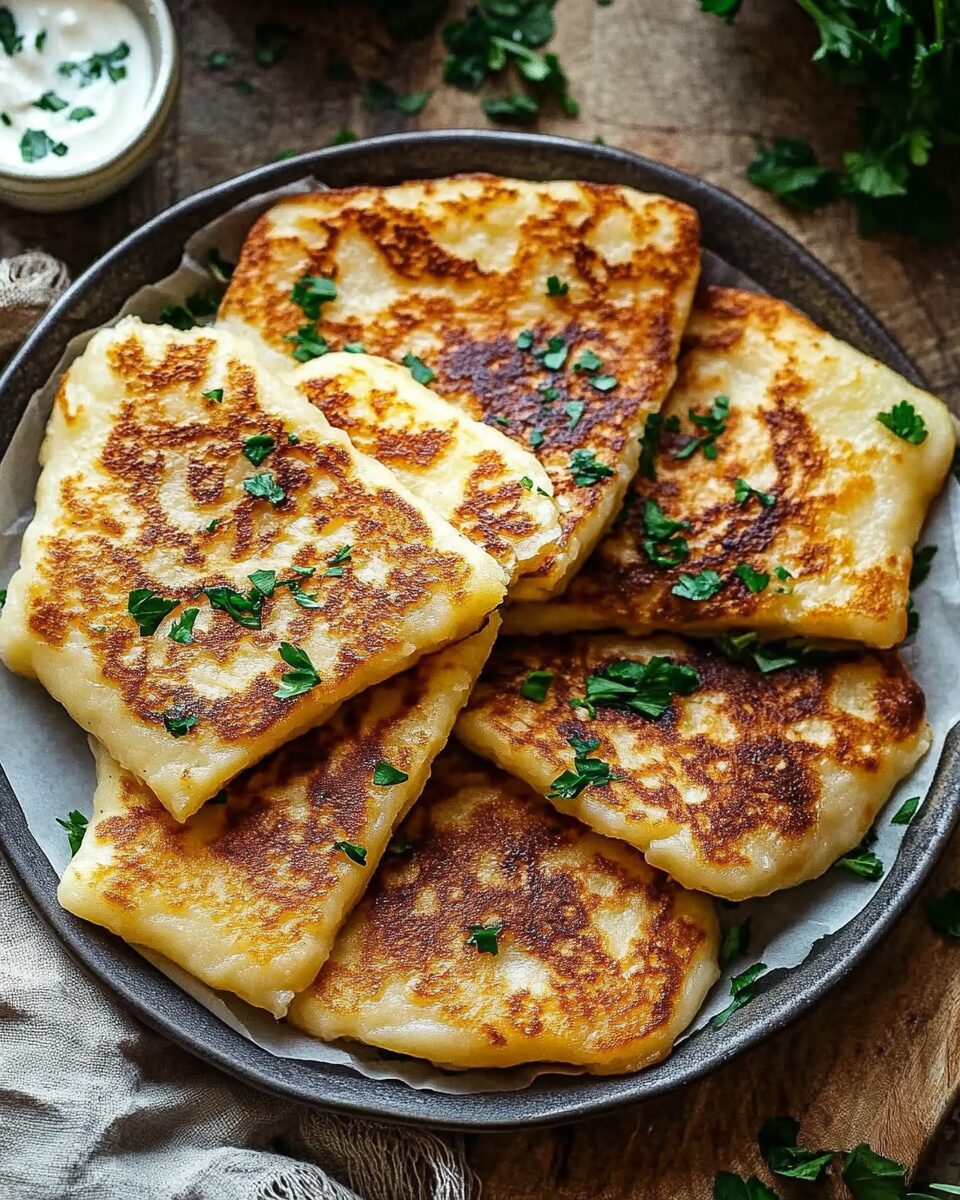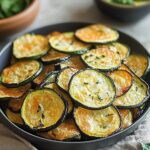Irish Potato Farls are a beloved staple in traditional Irish cooking warm, crispy, and irresistibly comforting. These pan-fried potato cakes have a beautifully golden crust while remaining soft and pillowy inside. With just a handful of simple ingredients potatoes, flour, butter, and a touch of salt you can whip up a batch in under an hour.
Perfect for breakfast, a brunch spread, or as a hearty side dish, these farls are versatile and easy to make. They pair wonderfully with eggs and bacon or can be enjoyed on their own with a pat of butter melting on top. Whether you’re looking to use up leftover mashed potatoes or simply craving a taste of Ireland, these golden farls bring a warm, homey touch to any meal.
Full Recipe:
Ingredients:
-
4 medium potatoes, peeled and cut in half
-
1/4 cup all-purpose flour (plus extra for dusting)
-
1 tablespoon melted butter
-
A pinch of salt
Directions:
-
Fill a pot with water, add the peeled potatoes, and bring to a boil over high heat. Once boiling, reduce the heat to medium-high and let simmer for 20 minutes until fork-tender.
-
Drain the potatoes and return them to the pot. Let them dry out with the residual heat for a few minutes.
-
Mash the potatoes until smooth and lump-free.
-
In a bowl, combine the warm mashed potatoes with flour, melted butter, and a pinch of salt. Stir gently until a soft dough forms.
-
Lightly flour a surface and knead the dough briefly. Roll it into a 9-inch circle about 1/4 inch thick.
-
Cut the dough into four quarters (farls) using a floured knife.
-
Heat a skillet over medium heat and sprinkle with a little flour. Cook the farls for about 3 minutes on each side until golden and crispy.
-
Sprinkle with a touch of salt and serve warm.
Prep Time: 15 minutes | Cooking Time: 30 minutes | Total Time: 45 minutes
Kcal: 180 kcal | Servings: 4 servings
The Timeless Charm of Irish Potato Farls: A Traditional Comfort Dish
Irish cuisine is known for its simplicity and heartiness, reflecting the agricultural roots and resilience of the Irish people. Among the most beloved and enduring dishes is Irish Potato Farls, a humble yet flavorful food that has been a staple in Irish households for centuries. This golden, crispy flatbread-like dish is made primarily from mashed potatoes, flour, and a touch of butter, showcasing how a few basic ingredients can transform into something truly comforting.
In this article, we’ll delve into the rich history of Irish Potato Farls, their cultural significance, variations to try, serving suggestions, and expert tips to perfect this classic recipe. Whether you’re a fan of traditional Irish cooking or simply curious about this delightful dish, Irish Potato Farls offer a taste of Ireland’s culinary heritage in every bite.
The Origins of Irish Potato Farls
Irish Potato Farls trace their origins back to the early 18th century, when potatoes became a dietary staple in Ireland. The term “farl” is derived from the Scottish word “fardel,” meaning “a fourth part,” which reflects how the dough is traditionally shaped and divided into quarters before cooking. This dish evolved as a practical and economical way to make the most of leftover mashed potatoes, preventing food waste while providing a satisfying and filling meal.
Potatoes were introduced to Ireland in the late 16th century and quickly became a cornerstone of the Irish diet due to their affordability, ease of cultivation, and nutritional value. As rural Irish families faced economic hardships, they relied on simple, accessible ingredients to create nourishing meals. Irish Potato Farls became a breakfast favorite, often cooked on a griddle or skillet, and served alongside other staples like eggs, bacon, and sausage.
Cultural Significance of Irish Potato Farls
Farls are not just a dish they are a symbol of Ireland’s agricultural past and the resourcefulness of its people. In many Irish households, potato farls are still a cherished part of the “Ulster Fry,” a traditional Irish breakfast that includes bacon, eggs, sausage, and black pudding. This hearty meal is especially popular in Northern Ireland and reflects the region’s love for comforting, home cooked food.
Beyond their association with breakfast, potato farls play a role in cultural celebrations and family traditions. They are often prepared during holidays like St. Patrick’s Day, offering a nostalgic taste of Irish heritage. For many Irish families, the simple act of making and sharing potato farls carries memories of generations past, preserving a culinary legacy that continues to bring people together.
Modern Adaptations and Variations
While the classic Irish Potato Farl recipe remains simple and unchanged, modern cooks have embraced creative variations to suit contemporary tastes and dietary needs. Some popular adaptations include:
-
Gluten-Free Potato Farls: By swapping regular flour for a gluten-free blend, those with dietary restrictions can still enjoy this comforting dish without sacrificing texture or flavor.
-
Cheesy Potato Farls: Adding grated cheese to the dough provides a rich, savory twist. Cheddar, Parmesan, or even a touch of blue cheese can enhance the depth of flavor.
-
Herb-Infused Farls: Fresh herbs like chives, parsley, or rosemary can be mixed into the dough to add a burst of freshness and aroma.
-
Sweet Potato Farls: For a slightly sweeter and more nutrient-rich option, sweet potatoes can replace traditional potatoes while still maintaining the signature crispiness.
-
Stuffed Farls: Creative fillings like caramelized onions, sautéed mushrooms, or cooked bacon can be tucked inside the dough before cooking, transforming the humble farl into a delicious stuffed treat.
These variations highlight the versatility of Irish Potato Farls, allowing home cooks to experiment while staying true to the dish’s comforting roots.
Serving Suggestions for Irish Potato Farls
One of the best things about Irish Potato Farls is their versatility they can be enjoyed in countless ways and served throughout the day. Here are some delicious serving suggestions to elevate your farls:
-
Traditional Breakfast Plate: Serve warm potato farls alongside eggs (fried or poached), crispy bacon, and grilled tomatoes for a classic Irish breakfast.
-
Savory Sandwich Base: Use farls as a base for an open-faced sandwich, topped with smoked salmon, cream cheese, and fresh herbs.
-
Soup Companion: Pair potato farls with a bowl of hearty Irish stew or creamy potato leek soup for a comforting and satisfying meal.
-
Snack or Appetizer: Cut farls into smaller pieces and serve with dips like garlic aioli, sour cream, or a tangy mustard sauce.
-
Brunch Delight: Top warm farls with avocado slices, a fried egg, and a drizzle of hot sauce for a modern brunch twist.
-
Sweet Treat: For a surprising dessert variation, lightly sweeten the dough and serve the farls with butter, honey, or jam.
Whether served as part of a full meal or enjoyed on their own, Irish Potato Farls offer a satisfying balance of crisp edges and fluffy interiors that make them irresistible.
Tips for Perfecting Irish Potato Farls
Achieving the perfect Irish Potato Farl requires attention to detail and a few key techniques. Here are some expert tips to ensure your farls turn out golden and delicious every time:
-
Use Starchy Potatoes: Opt for starchy potatoes like russets, as they mash smoothly and yield a light, fluffy dough.
-
Dry the Potatoes: After boiling, allow the potatoes to dry in the residual heat of the pot to remove excess moisture. This prevents the dough from becoming too wet.
-
Don’t Overwork the Dough: Mix the ingredients gently until just combined. Over-kneading can make the farls dense and chewy.
-
Maintain Even Thickness: Roll the dough evenly to about 1/4 inch thick for consistent cooking and crisp edges.
-
Preheat the Skillet: Ensure the skillet or griddle is fully heated before adding the farls. A medium heat prevents burning while allowing the farls to cook through.
-
Lightly Flour Surfaces: Dust your work surface, rolling pin, and knife with flour to prevent sticking and ensure smooth handling.
-
Cook in Batches: Avoid overcrowding the skillet. Cook the farls in batches, leaving space to allow for even browning.
-
Serve Immediately: Potato farls are best enjoyed fresh off the skillet when they are warm and crispy.
By following these tips, you’ll achieve the perfect balance of crispy exteriors and tender, fluffy interiors hallmarks of a well made Irish Potato Farl.
Conclusion
Irish Potato Farls embody the essence of traditional Irish cooking simple ingredients transformed into something nourishing and delicious. Their humble origins tell a story of resourcefulness, while their continued popularity reflects a timeless love for comfort food.
Whether you prepare them for a hearty breakfast, a savory side dish, or a snack, Irish Potato Farls are a versatile and satisfying addition to any table. With room for creative adaptations and endless serving possibilities, they offer both a connection to the past and an invitation to experiment in the kitchen.
As you explore the world of Irish cuisine, take a moment to appreciate the charm of Irish Potato Farls a dish that continues to warm hearts and homes, one golden bite at a time.






